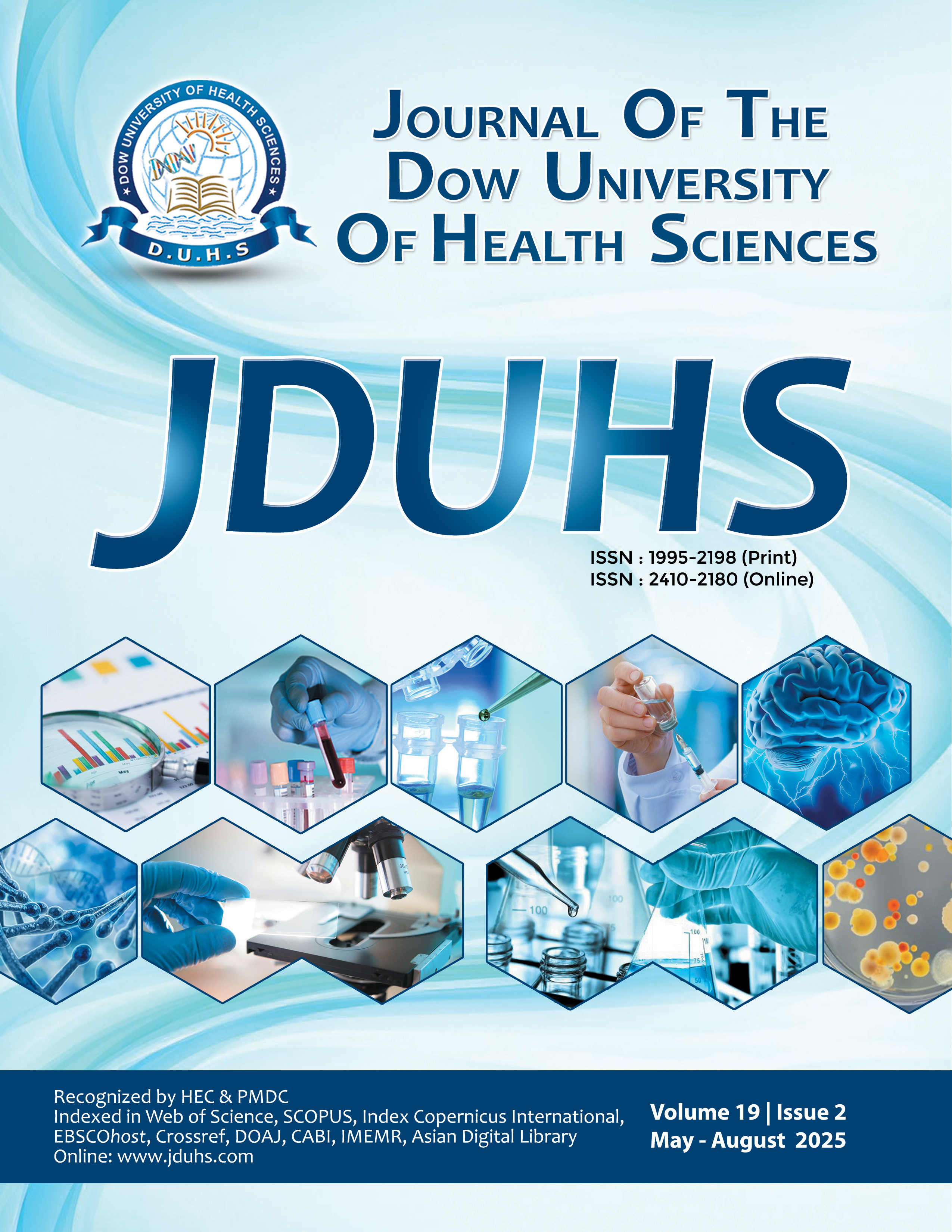Outcome of Laparoscopic versus Open Pyloromyotomy in Treatment of Infantile Hypertrophic Pyloric Stenosis
Abstract
Objective: To compare intraoperative and postoperative outcomes between laparoscopic and open pyloromyotomy in the treatment of infantile hypertrophic pyloric stenosis (IHPS).
Methods: This retrospective comparative study was conducted at the Department of Pediatric Surgery, Leeds General Infirmary, United Kingdom from May 2023 to April 2025. Infants aged from birth to 3 months with a confirmed diagnosis of infantile hypertrophic pyloric stenosis were included and grouped based on the surgical approach: laparoscopic or open pyloromyotomy. Primary outcomes included operative time, postoperative pain (assessed using the visual analogue scale), time to full feeding, complications and re-do surgery.
Results: A total of 61 infants with infantile hypertrophic pyloric stenosis, with 30 undergoing laparoscopic and 31 undergoing open pyloromyotomy. The median age at surgery and weight were 38.0 days (31.0–49.0) and 3.8 kg (3.3–4.1). The median operative time was insignificantly longer in the laparoscopic group 70.0 minutes (51.2-86.2) compared to the open group 64.0 minutes (49.0-70.0) (p-value = 0.225). However, the median postoperative pain score was significantly lower in the laparoscopic group compared to the open group i.e., 3.0 (3.0-4.0) vs. 5.0 (5.0-6.0) (p-value < 0.001). Time to full feeding was 24.0 hours in both groups, and the median length of hospital stay was 3.0 days. Re-do pyloromyotomy was required in 2 patients (6.7%) in the laparoscopic, while no re-do operations were needed in the open group.
Conclusion: Laparoscopic pyloromyotomy is associated with lower postoperative pain compared to open pyloromyotomy, with slightly longer operative time but similar time to full feeding and hospital stay.
Downloads
Published
How to Cite
Issue
Section
License
Copyright (c) 2025 Mushkbar Naeem

This work is licensed under a Creative Commons Attribution-NonCommercial 4.0 International License.
Articles published in the Journal of Dow University of Health Sciences are distributed under the terms of the Creative Commons Attribution Non-Commercial License https://creativecommons.org/ licenses/by-nc/4.0/. This license permits use, distribution and reproduction in any medium; provided the original work is properly cited and initial publication in this journal. ![]()





